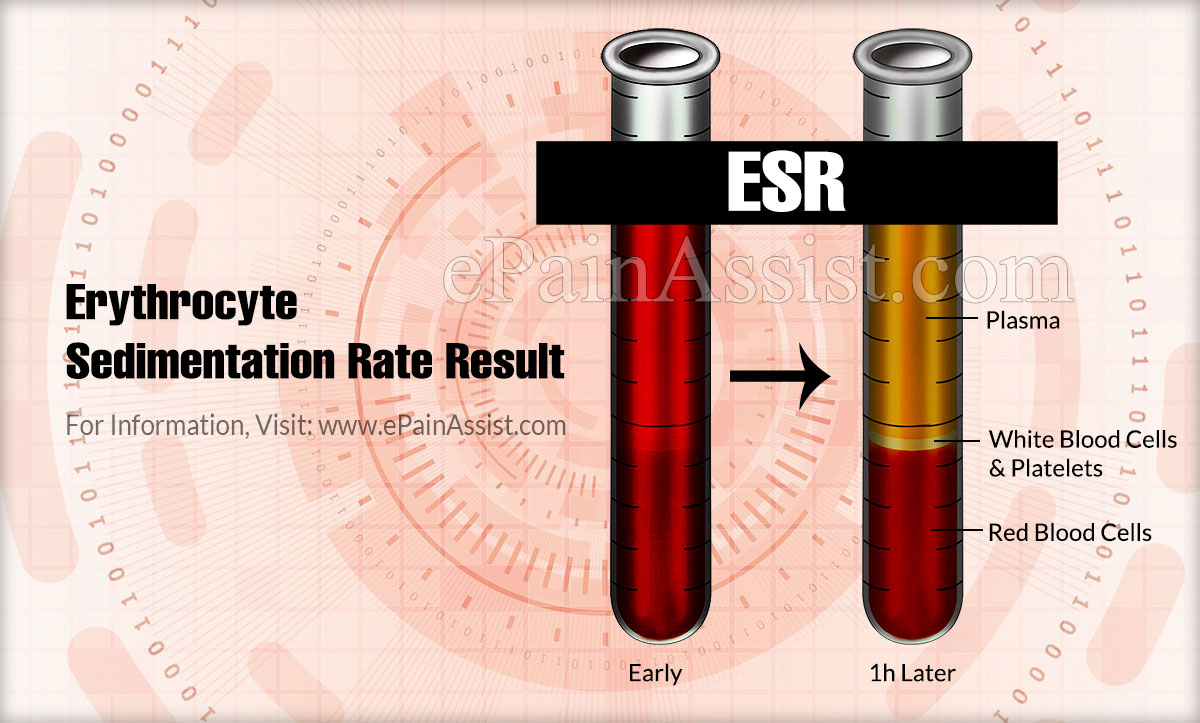What is the Erythrocyte Sedimentation Rate?
Erythrocyte sedimentation rate or ESR is the measurement of the rate, of how quickly red blood cells settle at the bottom of the blood sample.(1) The test is done to diagnose a specific disease, as there are many diseases that cause a rise in the level of ESR.
It is referred to as a non-specific test as a rise in its level confirms the presence of inflammatory activity in the body. Other tests are needed along with the person’s medical history to make a diagnosis.

Inflammation occurs in the body due to an underlying disease condition, which can be infection, cancer, or any autoimmune disease. Erythrocyte sedimentation rate or ESR testing is also done to monitor how the conditions are responding to the treatment.

How is Erythrocyte Sedimentation Rate (ESR) Test Performed?
In the Erythrocyte sedimentation rate or ESR test, the rate at which the red blood cells settle to the bottom is measured. This is called the sedimentation rate.
A small amount of blood is drawn from the vein of the individual and the blood is transferred to a vertical test tube. In the test tube, the red blood cells slowly start settling down leaving a clear yellow fluid at the top. This clear yellow fluid is called plasma.
The result is the measure of the amount of plasma that is present at the top of the test tube and is measured in millimeters per hour (mm/hr).
If a person has inflammation the red blood cells settle faster. It happens because the inflammation leads to an increase in the number of proteins in the body, which causes the red blood cells to clump together and settle more quickly.
If the blood cells settle faster the ESR reading is high indicating the presence of an inflammatory condition.

Erythrocyte Sedimentation Rate Result
The result in Erythrocyte sedimentation rate or ESR is determined by the amount of plasma remaining at the top of the test tube after one hour. The ESR test does not specify a particular condition but is done alongside other disease-specifying tests to reach a diagnosis of a condition.
The normal reference range of 1-20 mm/hr for females and ESR is 1-13mm/hr for males and this can vary with a person’s age. If the ESR result falls outside the reference range, a person may have a medical condition.(2)
Indications of Low Levels of Erythrocyte Sedimentation Rate
A low level of Erythrocyte sedimentation rate or ESR may indicate the following conditions:
- Leukemia, a blood cancer
- Congestive heart failure
- Sickle cell anemia, a condition affecting the shape of red blood cells
- Hyperviscosity or an increase in the thickness of blood
- High white blood cell count
- Low levels of fibrinogen (blood protein)
- High red blood cells count
Indications of Moderate Levels of Erythrocyte Sedimentation Rate
A moderate rise in the ESR levels may not necessarily indicate a serious condition. It may point towards the following conditions:
- A bone infection
- Heart infection
- Kidney disease
- Thyroid disease
- Rheumatoid arthritis
- Anemia
- Red cell abnormalities
- Some types of cancer
- Systemic infection
Indications of Extremely High Level of Erythrocyte Sedimentation Rate
Extremely high levels of ESR i.e. above 100mm/hr would indicate the following conditions:
- Multiple myeloma
- Temporal arteritis or polymyalgia rheumatic
- Hypersensitivity vasculitis, which is blood vessel inflammation that occurs due to a reaction to an allergen
- Waldenstrom’s macroglobulinemia, a white blood cancer
- Erythrocyte sedimentation rate or ESR test is compared with other tests to come to a conclusion or diagnose a condition.
Risk Associated with the Erythrocyte Sedimentation Rate Test
People with a high Erythrocyte sedimentation rate or ESR may not necessarily be suffering from a medical condition. Sometimes the level is raised due to pregnancy, menstruation, or age.
People taking an oral contraceptive, aspirin, cortisone, or vitamin A may also have an abnormal result.
If a medical condition is diagnosed after an abnormal Erythrocyte sedimentation rate or ESR test, treatment specific to the condition may be given. A few treatment options include:
- Antibiotic
- Nonsteroidal anti-inflammatory drugs
- Corticosteroid medications
These may help treat the inflammation.
Erythrocyte Sedimentation Rate does not specifically diagnose a disease but may provide information about the inflammation present in the body. An abnormal result may require further testing to come to a diagnosis.
